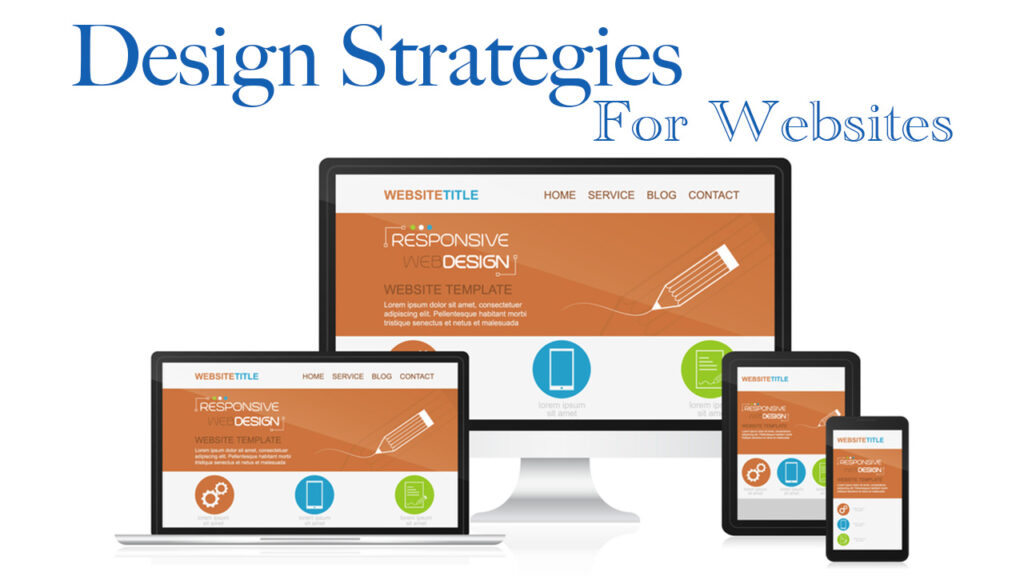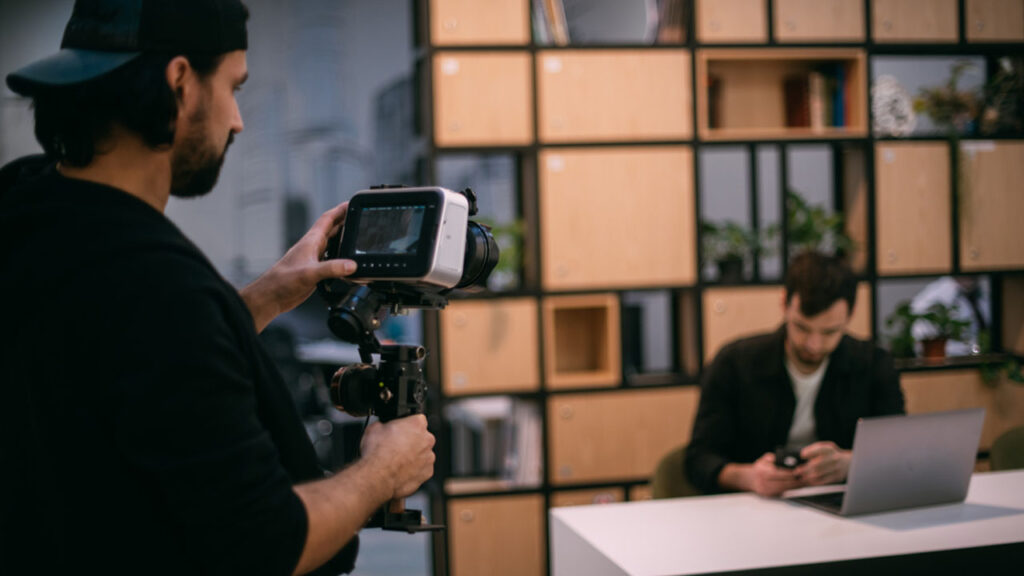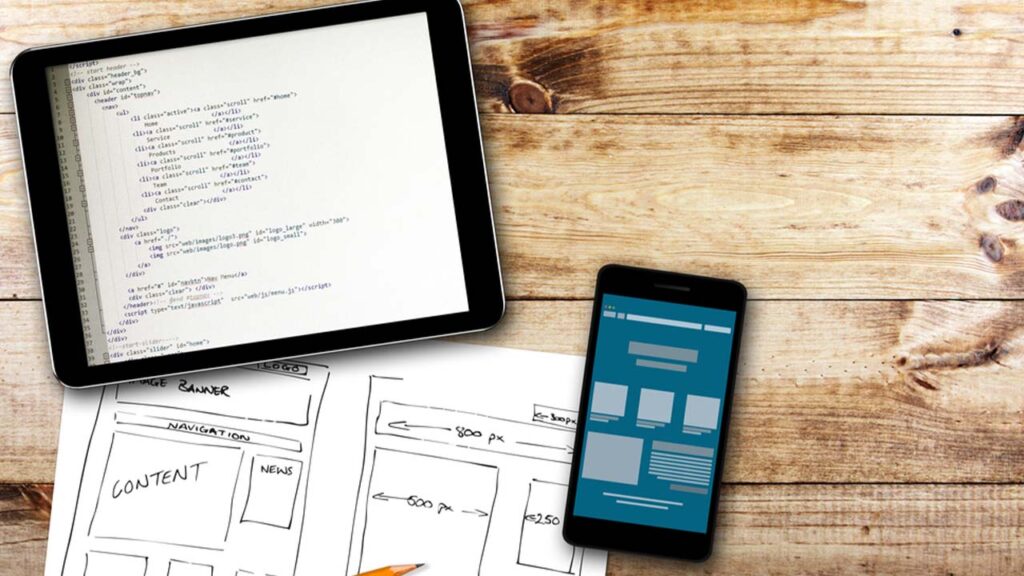Top Strategies for Effective Design for Web: A Comprehensive Guide
Brett Lewis
Web Design - December 5, 2023

Mastering design for web requires more than just a keen eye for aesthetics; it involves a strategic approach to enhance user experience and functionality. This article breaks down the key components of web design, from visuals to navigation, that are crucial for creating an effective online presence. Learn how to blend beauty with practicality to produce a website that not only looks good but also performs exceptionally on all devices.
Key Takeaways
- Web design must focus on user behavior, clear communication, and accessibility to ensure a comfortable interaction for all visitors, while innovation should only be introduced when superior to existing conventions.
- The visual identity of a website involves a cohesive color palette, impactful typography, and high-quality visual content designed to resonate with the brand and enhance user experience.
- A well-architected website with intuitive navigation and engaging, mobile-optimized landing pages can significantly improve user experience alongside SEO strategies to boost search engine visibility.
Understanding Web Design Essentials
The journey of creating an engaging website begins with understanding the fundamentals of web design. Comprehending user behavior is the initial stage, as it influences how users engage with websites and their fundamental behavioral tendencies. Hence, a professional website designer focuses on creating designs that adhere to these behavioral patterns.
In web design, satisfying site visitors’ expectations is of paramount importance. It fosters their confidence, trust, and reliability, thereby establishing the website’s credibility and aligning with the website’s purpose. This is usually accomplished by maintaining a clear and simple design on your own site, enabling users to navigate and accomplish their objectives efficiently without confusion or distractions.
Effective communication on a website involves adapting the writing style to users’ preferences, integrating direct language, and prioritizing high-quality content. While innovation can be advantageous, it is generally prudent to introduce innovation in web design only when a significantly superior idea is present. Otherwise, leveraging established conventions can offer a more user-friendly experience.
Finally, accessibility in web design ensures a comfortable interaction for all website visitors, irrespective of their abilities.
Crafting Your Website’s Visual Identity

Visual identity forms the crux of your website’s design. An engaging visual identity is not just about looking good; it’s about creating a cohesive and consistent visual language that resonates with your brand and target audience. This involves choosing the right color palette, selecting typography that speaks volumes, and incorporating high-quality visual content.
Choosing the Right Color Palette
Color holds significant influence in web design. It has the capability to affect the mood, emotions, and behavior of users. Through the use of appropriate colors, designers can establish emotional ties with users and improve the overall user experience. For expressing brand identity through color selection in web design, colors should align with the brand’s identity and intended emotional impact.
The process of selecting a suitable color palette for your site begins with a primary color, followed by two complementary colors. The background color should be more subdued than the primary color, and the typeface color should offer a good contrast with the overall palette, improving readability.
There is a diverse range of commonly preferred color palette options for web design. These include the 70’s Inspired – Modern Color Palette, Lightning Blue Purple – Simple Web Color Palette, Metallic Blue, Purple, Red, Navy Blue and Electric Blue, and many more. These color palettes can be chosen based on the website’s purpose and target audience.
Selecting Typography That Speaks Volumes

Typography is another critical element in web design. The defining attributes of typography that are in harmony with brand identity encompass:
- Legibility
- Uniqueness
- Memorability
- Effective communication of the brand personality
It should feature clean lines without serifs, align with the brand’s personality, and ensure readability.
To guarantee the readability of chosen fonts on different devices and screen sizes, it is necessary to evaluate the spacing by trying fonts at a slightly smaller size to check for readability, prioritize readability over aesthetics, and select fonts that are clear and easy to read. Additionally, consideration should be given to size, color, and contrast for web accessibility, appropriate font sizes should be chosen, and smooth scaling across different devices should be enabled.
The most recommended fonts for web design are:
- Roboto
- Libre Franklin
- Raleway
- Inter
- Source Sans Pro
- Poppins
- Helvetica
- Arial
- Georgia
- Tahoma
- Roboto
They are favored for their high readability, versatile design, and compatibility across various devices and screen sizes.
Incorporating High-Quality Visual Content

Visual content plays a significant role in enhancing the visual appeal of a website and effectively conveying the brand message. This includes high contrast or heavy exposure imagery, provocative tiles, and nearly three-dimensional graphics that can greatly enhance a website page’s identity.
Animated visual content has the potential to create engaging and dynamic experiences for users. Some examples of animated visual content include:
- GIFs
- Videos
- Slideshows
- Infographics
For instance, Digital Cover’s implementation of animated content provides a unique and engaging user experience.
Including personal images by uploading them to the design brief or contest is possible and can add a unique and personalized touch to your website design. Additionally, designers have the option to utilize stock images, which are available for purchase from third-party sources if necessary.
Architecting Your Site for Optimal Flow
A well-defined site architecture is instrumental in organizing website page content, easing user navigation, and improving the overall user experience. This involves designing an intuitive and easy-to-navigate site, enabling users to efficiently accomplish their desired tasks, resulting in a pleasant and efficient experience.
Site navigation can be optimized by:
- Adhering to the ‘two-click rule’, which guarantees that users can reach any page within two clicks
- Implementing clear menu systems and anchor menus for swift navigation
- Integrating subtle animations to direct user attention
These strategies can all contribute to an optimized site navigation.
Innovative features, such as navigation that also serves as a scroll progress bar, can enhance the user experience by introducing added functionality and visual indicators to signify advancement through content.
Building Engaging Landing Pages

As the gateway to your website, landing pages play a pivotal role in grabbing the attention of your audience and urging them to take desired actions. An effective landing page consists of:
- A main headline
- Unique selling proposition
- Key benefits
- Images or videos
- Social proof
- Call to action
- Trust elements
- Mobile responsiveness
For instance, the IBM website employs visual storytelling to elucidate how its Watson tool operates by enabling visitors to explore three real-world stories through video game-like functions.
Effective calls to action (CTAs) also play a significant role in landing pages. Illustrations of impactful CTAs on a homepage encompass a variety of commitment-level options, including ‘Read More’, ‘Watch Now’, and ‘Download the App’. This diverse range enables visitors to interact with the content to a degree that aligns with their comfort level.
Enhancing User Interaction with Interactive Elements

Interactive elements like prewritten storylines can greatly boost a website’s user experience by actively engaging users with content and effectively promoting products or services. For instance, interactive elements on an environmental website like Rainforest Guardians play a crucial role in enhancing the user experience, enabling more profound engagement with the content and nurturing a connection with the site’s mission.
Innovative website design ideas, such as those that feature highlighted titles that come into focus and images that pull towards the user when hovered over, can create a dynamic and engaging visual effect on web pages.
Effective methods for improving user interaction on websites include:
- Interactive infographics
- Search bars
- Surveys
- Contact forms
- Animations
These elements work to engage users and enhance their experience.
Mobile-First Design: A Necessity in the Modern World
In today’s world, mobile optimization is a necessity, not a luxury. Ensuring a smooth browsing experience across all devices through mobile website design optimization is a must for any online store.
Responsive design plays a crucial role in ensuring that the website maintains its visual appeal and functionality across various devices such as desktops, laptops, tablets, and smartphones.
To enhance mobile optimization, it’s advisable to:
- Prioritize the most essential elements on the page
- Eliminate any non-essential components
- Optimize the space above the fold by featuring crucial information, such as the menu or name
Optimizing for Search Engine Visibility
SEO, short for search engine optimization, is an integral part of web design that incorporates a slew of strategies to enhance a website’s search engine visibility, consequently boosting traffic and potential conversions.
Keyword research plays a crucial role in identifying the terms and phrases that users are searching for, thus informing content creation and contributing to the improvement of website ranking. On-page SEO strategies encompass:
- Refining content with pertinent keywords
- Optimizing meta tags and descriptions
- Incorporating alt text to images
- Organizing content with appropriate headers
Internal linking improves SEO by facilitating Google’s discovery, indexing, and comprehension of all the pages within your website. Additionally, it aids in enhancing the ranking of your website by offering descriptive links for Google to navigate.
Leveraging Analytics to Refine Your Web Design
Web analytics play a crucial role in refining website design. They enable data-driven enhancements by tracking a variety of performance metrics and understanding user behavior. The most effective web analytics tools for monitoring website performance are:
- Google Analytics
- Mixpanel
- Kissmetrics
- Adobe Analytics
- Matomo
- Visual Website Optimizer (VWO)
Several specific metrics that should be monitored to enhance website design include:
- Page Views
- Average Time on Page
- Average Session Duration
- Pages per Session
- Bounce Rate
- Traffic Sources
The bounce rate is indicative of a site’s ability to engage visitors and can pinpoint areas in the design that require enhancement. Heatmaps offer insights into visitor interaction with a web page, identifying key areas for critical content placement and revealing movement patterns that indicate engagement levels or areas of confusion.
Keeping Your Website Up to Date
Keeping your own website up-to-date enhances its appeal and trustworthiness, ensuring its relevance and alignment with industry trends.
In order to maintain the freshness and relevance of a website, it is advisable to update the design once or twice annually, and to contemplate a complete redesign every two to five years.
To modernize an outdated website, one should begin by:
- Evaluating the current site
- Updating the design to reflect current trends
- Removing or updating outdated content
- Incorporating a strategy for adding new content regularly.
Utilizing Professional Web Design Tools
Website builders are tools catered towards DIY website creation, enabling users to construct a website without necessitating coding proficiency. They typically encompass customizable website templates for adding text and images, and many also handle domain registration and hosting.
When selecting a website builder, it is important to consider its suitability for the purpose of your site, as well as its balance of customizability, ease of use, and scalability to meet the needs of your web project.
In order to utilize WordPress for website design, it is necessary to acquire web hosting from a third-party hosting provider and proceed with the installation of WordPress.
Deciding Between DIY and Hiring a Professional Web Designer
Professional website design costs can range from several hundreds to thousands of dollars, depending on variables like design complexity, designer’s expertise, and project-specific stipulations.
It is advisable to contemplate enlisting the services of a web designer if one finds oneself:
- lacking the time to commit to the web design process
- lacking the requisite design skills
- if the budget permits professional expertise, which can guarantee the development of a high-caliber website tailored to specific requirements.
However, if you have the time, skills, and desire to do it yourself, website builders can be a great option. They provide a platform for creating a professional-looking website without the need for coding knowledge, and many offer a range of customizable templates that can be easily adapted to suit your brand identity and website’s purpose.
Showcasing Real-World Design Excellence
The analysis of award-winning website designs, such as Virgin America’s website which won the Most Significant Industry Evolution at the UX Awards, or the woodworking website which won a Webby in 2019, establishes standards for exceptional design quality and innovation.
Design tools and communities have a substantial impact on acknowledging and promoting outstanding web design. Tools such as Overflow, which offers flow diagrams in video format, and online accolades like the FWA of the Day, serve not only as resources for creating and displaying design work but also as platforms for exchanging knowledge and establishing quality benchmarks within the design community.
Innovative web designs such as:
- Feed, known for its incorporation of animation and video
- The Frans Hals Museum website, which seamlessly integrates digital design elements with its exhibits
- Overflow’s website, which features distinctive flow diagrams that transform intricate ideas into compelling narratives
push the boundaries of conventional web design.
Summary
In conclusion, creating an effective web design involves a comprehensive understanding of user behavior, crafting a cohesive visual identity, architecting the site for optimal flow, building engaging landing pages, and enhancing user interaction with interactive elements. Prioritizing a mobile-first design, optimizing for search engine visibility, leveraging analytics to refine the design, keeping the website up to date, utilizing professional web design tools, and drawing inspiration from real-world design excellence are all crucial components. By implementing these strategies, you’ll be well on your way to creating websites that not only look great but also provide an engaging user experience.
Frequently Asked Questions
What is design for the web?
Web design encompasses the visual and functional aspects of a website, including its layout, colors, fonts, and user interface. It plays a crucial role in creating an online presence and ensuring a positive user experience.
How do I design my own website?
To design your own website, follow these steps: set your goal, choose a website builder, define your layout, claim your domain name, gather content, add the right pages, design website elements, and pick the professional tools you need. This will help you create a successful website. However, if you are building a website for your business, consider the time and expertise involved.
I like to say,
“You focus on what you do well…
running your business,
and let us focus on what we do well…
digital marketing for your business
(including building a highly converting, beautiful website!”
How can I learn to design myself for web?
To learn web design, start with basic resources such as online tutorials or books on web design. Master HTML and CSS first, then explore more advanced web design languages like JavaScript. Good luck!
What is the significance of understanding user behavior in web design?
Understanding user behavior in web design is crucial as it sets the foundation for implementing effective design principles. It involves grasping how users interact with websites and their cognitive processes.
How does color affect user experience in web design?
Color significantly influences the mood, emotions, and behavior of users, establishing emotional ties and improving the overall user experience in web design.
